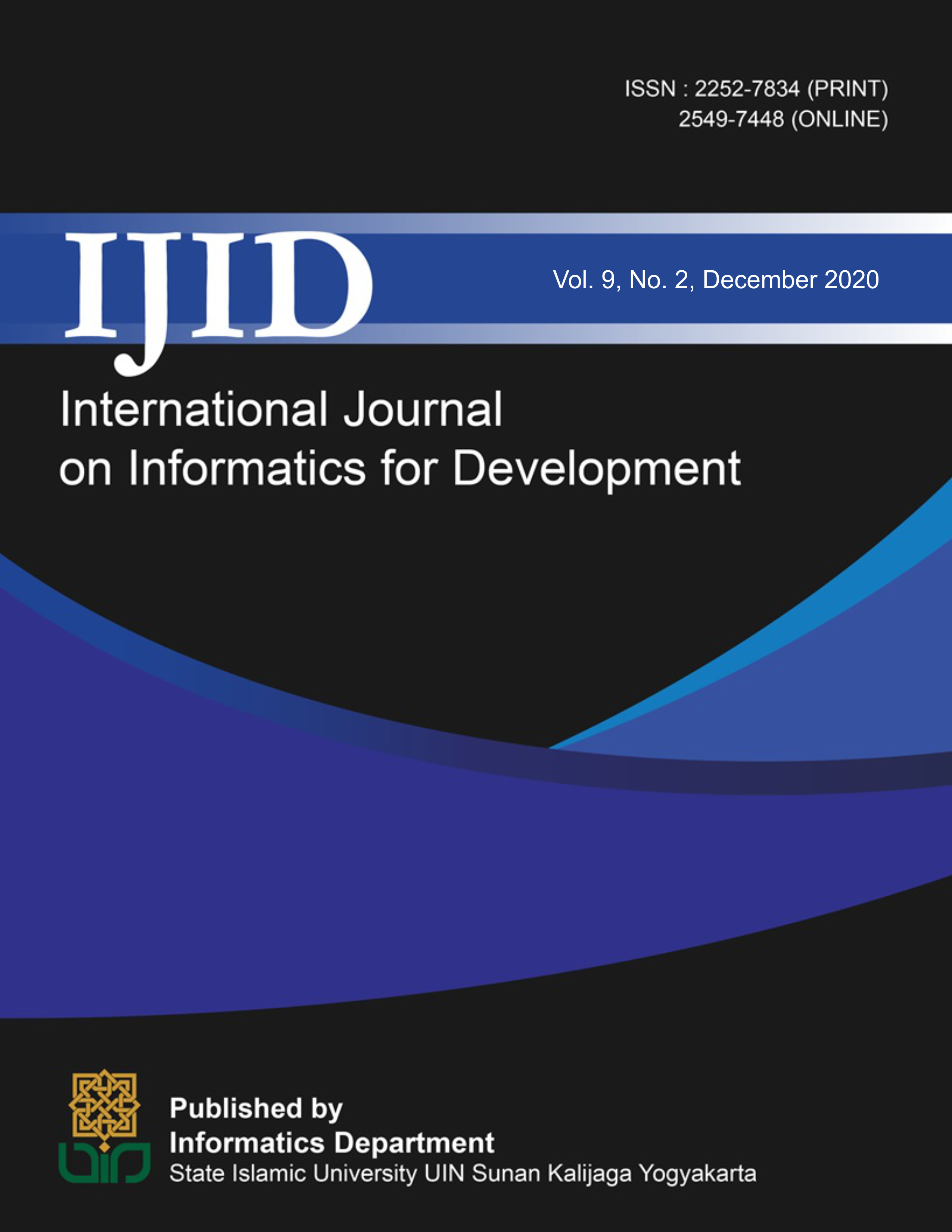Abstract
XYZ University library provides offline and online book loan services. The library's online service uses the m-library application. This study aims to see the implementation of the m-library application and see the extent of the evaluation of the application. The m-library application is used for the process of borrowing books, viewing catalogs, and reading book online. The method used in this research is qualitative descriptive through interviewing interviewees and observing applications. The results of this study are that there are several benefits and weaknesses to the m-library application. From these shortcomings, it can be recommended to increase the implementation of the m-library application, namely the need for application development towards menu flexibility and application services, ease of online membership registration process, compatibility of online and offline book catalogs and more effective use of application features according to the University library business process. This application also requires broader socialization to the university academic community so that its use is more optimum.References
H. Hartono, “STRATEGI PENGEMBANGAN PERPUSTAKAAN DIGITAL DALAM MEMBANGUN AKSESIBILITAS INFORMASI: Sebuah Kajian Teoritis pada Perpustakaan Perguruan Tinggi Islam di Indonesia,” UNILIB J. Perpust., vol. 8, no. 1, pp. 75–91, 2017, doi: 10.20885/unilib.vol8.iss1.art7.
A. O. P. Dewi, “Penggunaan Mobile Library untuk Perpustakaan Digital,” Anuva J. Kaji. Budaya, Perpustakaan, dan Inf., vol. 3, no. 2, pp. 151–155, 2019.
E. Turban, J. K. Lee, D. King, J. McKay, and P. Marshall, “Electronic Commerce: a managerial perspective 2008,” Commer. A Manag. Perspect. (5th ed., no. July 2015, pp. 1–53, 2008, [Online]. Available: http://wps.prenhall.com/bp_turban_ec_2008/79/20298/5196418.cw/index.html%5Cnhttp://scholar.google.com/scholar?hl=en&btnG=Search&q=intitle:Building+e-commerce+applications+and+infrastructure#4%5Cnhttp://www.scientificcommons.org/58999413%5Cnhttp://hdl.hand.
B. Georgios and P. Panagiota, “Mobile Libraries: Defining the phenomenon,” Int. J. Libr. Inf. Sci., vol. 10, no. 3, pp. 35–40, 2018, doi: 10.5897/ijlis2017.0816.
M. A. Muin, “Penerapan Sistem Otomasi di Perpustakaan Fakultas Adab dan Humaniora UIN Alauddin Makassar,” Al-Kuttab J. Perpust. dan Inf., vol. 2, no. 1, 2015, [Online]. Available: http://perpustakaanstainpsp.net/e-journal/index.php/alkuttab/article/view/51.
R. E. Fitriani, “Layanan UNILA Library Mobile: Inovasi Teknologi Digital di Perpustakaan Universitas Lampung,” Pustabiblia J. Libr. Inf. Sci., vol. 2, no. 1, p. 149, 2018, doi: 10.18326/pustabiblia.v2i1.149-162.
D. Rahmadhani and Marlini, “Pemanfaatan Software SLiMS (Senayan Library Management System) Di UPT Perpustakaan Kopertis Wilayah X (Sumatera Barat, Riau, Jambi, Dan Kepulauan Riau),” J. Ilmu Inf. Perpust. dan Kearsipan, vol. 4, no. 1, September 2015, pp. 192–203, 2015.
W. Nashihuddin, “MENGULAS SENAYAN LIBRARY MANAGEMENT SYSTEM ( SLIMS ) DARI,” no. July, 2020.
A. Cropley, Introduction to Qualitative Research Methods. Hamburg, Germany, 2015.
B. I. Suwandayani, “Analisis Perencanaan Pembelajaran Tematik Pada Kurikulum 2013 di SD Negeri Kauman I Malang,” ELSE (Elementary Sch. Educ. Journal) J. Pendidik. dan Pembelajaran Sekol. Dasar, vol. 2, no. 1, pp. 78–88, 2018, doi: 10.30651/else.v2i1.1214.

IJID (International Journal on Informatics for Development) is licensed under a Creative Commons Attribution-NonCommercial-NoDerivatives 4.0 International License

